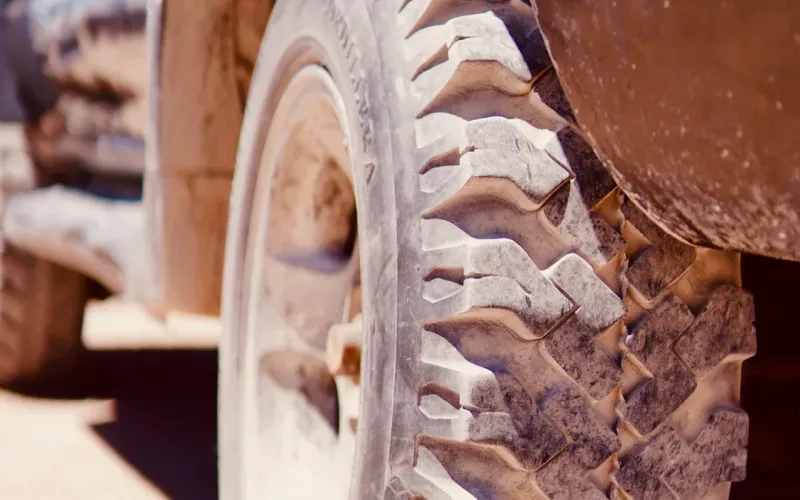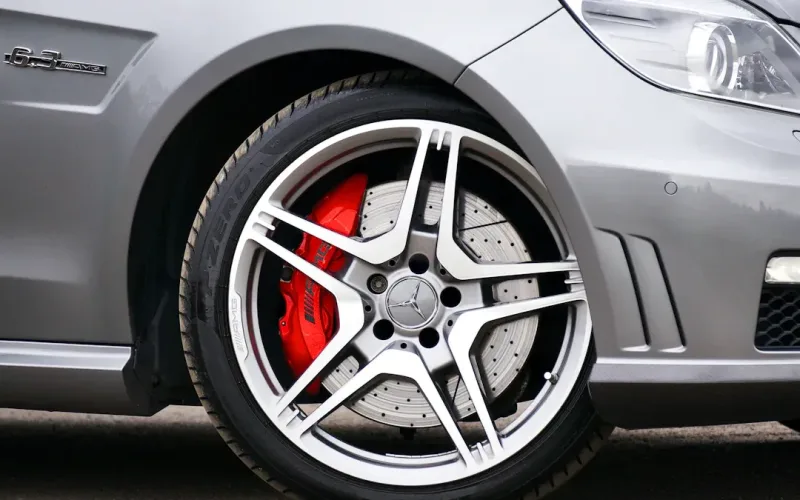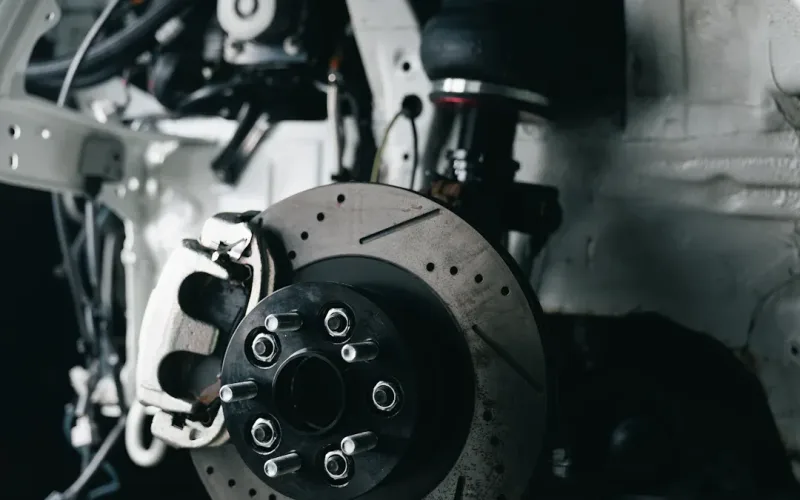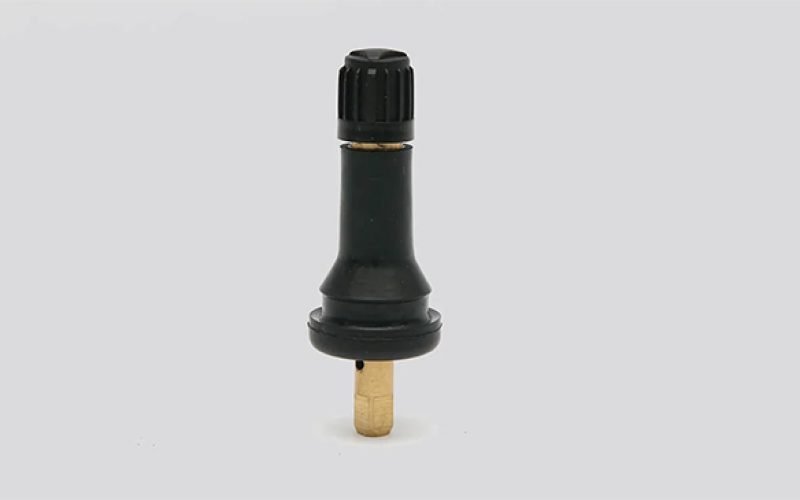

admin1
June 19, 2025
Are Wheel Well Weights the Secret to Better Vehicle Handling

You want your vehicles to deliver smoother rides and better performance every time you drive. Wheel well weights help you achieve better balance and improved performance by stabilizing your vehicles, which leads to greater safety. These weights reduce unwanted vibrations and support fuel efficiency, so you enjoy smoother rides and longer-lasting tires. When you use wheel well weights, you notice increased safety and balance on the road. Many drivers choose these solutions to boost vehicle performance and fuel efficiency with confidence.
What Are Wheel Well Weights?

Definition and Purpose
You may wonder what wheel well weights are and why they matter for your vehicle. Wheel well weights are small devices that attach to your wheels to help achieve precise tire balancing. When you use these weights, you improve tire balance and reduce uneven wear. This leads to a smoother ride and better control. Wheel weights play a key role in wheel balancing solutions, making sure your tires spin evenly at any speed. You can rely on them to boost safety and comfort every time you drive.
How Wheel Well Weights Are Installed
You can install wheel well weights in two main ways: clip-on or stick-on. Stick-on wheel weights use a strong adhesive to attach directly to the inside of your wheel rim. You simply peel off the backing and press the weight firmly onto a clean, dry surface. This method works well for modern alloy wheels and high-performance vehicles. Clip-on wheel weights snap onto the edge of steel rims. You use a special tool to secure them in place. Both methods help you achieve proper tire balance, but stick-on wheel weights offer more flexibility for precise placement.
Tip: Always clean the wheel surface before applying stick-on wheel weights. This ensures a strong bond and prevents the weights from coming loose.
Types of Wheel Well Weights
You have several options when choosing wheel weights. The most common types include steel, lead, and zinc. Each material offers unique benefits for stick-on wheel weights and traditional clip-on styles. The table below shows how these materials compare:
| Material | Composition & Environmental Impact | Performance & Safety Characteristics | Installation & Application |
|---|---|---|---|
| Steel | Durable, recyclable, eco-friendly | Reliable, corrosion-resistant, stable clip-on | Clip-on for steel rims, cost-effective, stable for standard tires |
| Lead | High density, low cost, toxic | High density, unsafe, environmental hazard | Previously common, now discouraged due to toxicity |
| Zinc | Non-toxic, corrosion-resistant, malleable | Secure adhesive, preferred by OEMs, corrosion-resistant | Stick-on for alloy rims, precise for high-performance tires |
Stick-on wheel weights made from zinc or steel are popular for modern vehicles. They allow you to place the weight exactly where you need it, which is important for tire balance and handling. When you match the right type of wheel weights to your rim material, you improve tire longevity and driving performance. Stick-on wheel weights also help reduce vibration and road noise, making your ride more comfortable.
How Wheel Well Weights Improve Handling

Enhancing Vehicle Balance and Stability
You want your vehicle to stay steady on the road, especially during sharp turns or sudden maneuvers. Wheel well weights help you achieve this by improving balance and making sure your car does not tip or sway easily. When you add wheel weights, you change the weight distribution across your vehicle. This adjustment helps correct imbalances that can cause your car to lean or roll too much.
Engineers have tested how extra weight affects stability. They used a rotary-tilting platform and measured changes with special tools. The results showed that adding wheel weights increased the critical rollover angle and improved the stability index by about 8.5%. This means your vehicle becomes less likely to tip over, even when you drive on uneven roads or take sharp corners. Here is a summary of the engineering data:
| Parameter / Indicator | Description / Effect | Quantitative Change / Result |
|---|---|---|
| Additional Weight (Ballast) | 50 kg ballast attached to the test vehicle’s load frame | Baseline “0” means no additional weight |
| Critical Rollover Angle | Angle of loss of type I rollover stability | Increased values show improved stability |
| Rollover Stability Indicator | Stability rating index from experimental data | About 8.5% higher with inclined oscillation joint |
| Experimental Setup | Rotary-tilting platform with wheel weighting pads | Precise measurement of stability changes |
| Mathematical Model | Validated model for rollover stability | Predicts improvements from weight distribution |
When you use wheel well weights, you help your vehicle maintain better balance. This leads to more predictable steering response and a safer driving experience. You will notice that your car feels more stable, especially if you drive a performance vehicle or carry heavy loads.
Reducing Vibration and Road Noise
You may have felt your steering wheel shake or heard annoying noises while driving. These problems often come from poor tire balance. Wheel weights play a big role in fixing this. When you install them, you help your tires spin evenly. This reduces vibration and makes your ride much smoother.
Stick-on wheel weights are especially good at targeting small imbalances. You can place them exactly where needed, which helps reduce both vibration and road noise. As a result, you enjoy smoother rides and less fatigue during long trips. Your passengers will also notice the difference. A quieter cabin makes every journey more comfortable.
Tip: Regularly check your wheel weights to make sure they stay in place. This helps keep your tire balance perfect and your vehicle performance at its best.
Boosting Safety and Control
Safety matters every time you get behind the wheel. Wheel weights help you keep control of your vehicle, especially at high speeds or during emergency maneuvers. When your wheels are balanced, your tires grip the road better. This improves steering response and lets you react quickly to changes in traffic or road conditions.
Balanced wheels also help your tires wear evenly. This means you get better traction and longer tire life. You save money and improve fuel efficiency because your engine does not have to work as hard. Good weight distribution also helps your brakes work more effectively, which adds another layer of safety.
You can trust wheel well weights to give you better handling and more confidence on the road. Whether you drive in the city or on the highway, you will notice improved control and a safer driving experience.
Wheel Well Weights vs. Other Wheel Weights
Traditional Wheel Weights Explained
You may have seen wheel weights on cars for many years. These small parts help balance your tires and keep your ride smooth. Traditional wheel weights started with clip-on styles in the 1930s. Later, stick-on wheel weights appeared in the 1970s. The table below shows how these wheel weights have changed over time:
| Aspect | Details |
|---|---|
| Historical Origin | Clip-on weights introduced in early 1930s; adhesive weights appeared in the 1970s. |
| Traditional Material | High-density lead: low cost, easy to manufacture and install. |
| Environmental Impact | Lead banned in some states due to environmental concerns, prompting material alternatives. |
| Alternative Materials | Zinc: moldable like lead but larger size; Steel: higher density but prone to corrosion. |
| Steel Weight Solutions | Coated or encased in plastic shell to prevent corrosion and ease installation. |
| Adhesive Weight Advances | Improved adhesive bonding tolerances for extreme temperatures (sub-freezing to >200°F). |
| Evolution Summary | Shift from simple clip-on lead weights to environmentally compliant, performance-optimized designs. |
You can see that stick-on wheel weights have become more popular as car wheels have changed. Modern wheels often do not have flanges for clip-on weights, so stick-on wheel weights fit better and look cleaner.
Unique Advantages of Wheel Well Weights
Stick-on wheel weights offer you many benefits over older types. You can use them on alloy wheels, which are common on new cars. These wheel weights stay hidden inside the rim, so your wheels look better. You also get more precise balancing because you can place stick-on wheel weights exactly where you need them.
You help the environment when you choose stick-on wheel weights made from steel or zinc. These materials are safer than lead and last longer. Market research shows that stick-on wheel weights can reduce unnecessary mass by 50-70% per wheel assembly. This helps your car use less energy, which is important for electric vehicles. New adhesives make stick-on wheel weights strong enough to handle heat, cold, and rough roads.
You also save time during installation. Stick-on wheel weights go on quickly and do not need special tools. Many car makers now use stick-on wheel weights for their new models because they work well and look great.
Tip: Stick-on wheel weights are perfect for luxury cars and high-performance vehicles. You get a smooth ride and a clean look every time.
When to Choose Wheel Well Weights
You should choose stick-on wheel weights if you drive a modern car with alloy wheels. These wheel weights fit better and do not damage your rims. If you want your wheels to look good, stick-on wheel weights stay out of sight. You also get better tire balance, which means less vibration and noise.
Stick-on wheel weights work well in extreme weather. The adhesives hold tight in freezing cold or hot summer days. If you care about the environment, stick-on wheel weights made from steel or zinc are a smart choice. You avoid the risks of lead and help keep your car safe.
You may still see clip-on wheel weights on older cars with steel rims. For most drivers today, stick-on wheel weights give you the best mix of performance, safety, and style. You can trust stick-on wheel weights to keep your ride smooth and your tires lasting longer.
Stick-On Wheel Weights and Modern Vehicles
Compatibility with Alloy Wheels
You want your wheels to look great and perform well. Stick-on wheel weights give you the best solution for alloy wheels. Many experts recommend stick-on wheel weights because they protect your rims from scratches. Clip-on weights can damage alloy wheels and make them look less attractive. Stick-on wheel weights fit smoothly on the inside of the rim, so you keep your wheels looking new.
- Stick-on wheel weights work best with alloy and custom rims.
- You avoid scratches and corrosion that clip-on weights can cause.
- Specialty wheels often need stick-on wheel weights because clip-on types do not fit.
- You get a secure fit without harming your wheels.
Stick-on wheel weights use strong adhesives. These adhesives hold the weights in place, even when you drive in tough conditions. You should always clean the wheel surface before applying stick-on wheel weights. This step helps the weights stay on longer and keeps your wheels balanced.
Benefits for Contemporary Cars
Stick-on wheel weights offer many advantages for today’s vehicles. You can install them easily with a peel-and-stick method. You do not need special tools or skills. Many drivers like stick-on wheel weights because they give a clean, hidden look. You keep your wheels stylish and modern.
Stick-on wheel weights help you balance your tires with precision. You notice less vibration and noise when you drive. Your tires wear evenly, so they last longer. Stick-on wheel weights also improve fuel efficiency by making sure your tires roll smoothly. You save money on gas and enjoy a quieter ride.
Stick-on wheel weights use eco-friendly materials like zinc and steel. You help the environment and follow new rules that ban lead.
Performance tests show that stick-on wheel weights stay strong in normal driving. They resist corrosion and keep your wheels balanced. You get better handling and more comfort on every trip.
Potential Drawbacks and Considerations
Stick-on wheel weights work well for most vehicles, but you should know a few things. The adhesive on stick-on wheel weights may not hold as well in extreme weather or on rough roads. You need to check your stick-on wheel weights often to make sure they stay in place.
Stick-on wheel weights fit best on smooth, clean rims. If your wheels have a rough or uneven surface, the weights may not stick well. You should always clean your wheels before you apply stick-on wheel weights. This step helps you get the best results.
Stick-on wheel weights give you the best mix of style, performance, and fuel efficiency for modern vehicles. You enjoy a smoother ride, longer tire life, and a clean look for your wheels.
You want your vehicle to handle well and give you a smooth ride. Wheel well weights help you achieve better balance and longer tire life. You notice less vibration and more comfort on every trip. Trusted brands like Fortune offer high-quality products that support your goals. You improve safety and enjoy peace of mind when you choose the right wheel well weights. Investing in quality makes a real difference for your driving experience.
FAQ
How often should you check your wheel well weights?
You should check your wheel well weights every time you rotate or balance your tires. Regular checks help you spot loose or missing weights early. This keeps your ride smooth and your tires wearing evenly.
Can you install wheel well weights at home?
Yes, you can install stick-on wheel well weights at home. Clean the wheel surface first. Use a tire balancing tool for best results. If you feel unsure, ask a professional for help.
Do wheel well weights fit all types of wheels?
Most stick-on wheel well weights fit alloy and steel wheels. Always check your wheel’s surface for smoothness. Some custom or specialty wheels may need specific weights. Ask your supplier if you have questions.
Will wheel well weights affect your fuel efficiency?
Balanced wheels help your tires roll smoothly. This reduces drag and can improve your fuel efficiency. You may notice fewer vibrations and a quieter ride, which also helps your tires last longer.





